Best Shooting Ear Protection for 2025 [Range-Tested!]
Hearing protection is one of the easiest pieces of gear to overlook at the range, and it is also one of the most important.
Most firearms produce enough noise to cause permanent hearing loss, even when you are outdoors, so showing up without proper protection is a fast way to create a lifelong problem. The good news is that today’s options cover every preference and budget.
Shooters can pick from electronic muffs, simple foam plugs, custom inserts, or combinations that stack protection for louder calibers. Each style has strengths and weaknesses, which is why choosing the right setup can feel confusing if you have not compared them side by side.
This guide sorts through the noise and explains what actually works.
Whether you shoot often or only make it to the range a few times a year, you will see which models held up during testing, which ones are worth the money, and which ones provide the best balance of comfort, clarity, and protection.
Stick around if you want a simple path to the right ear pro without sorting through marketing hype.
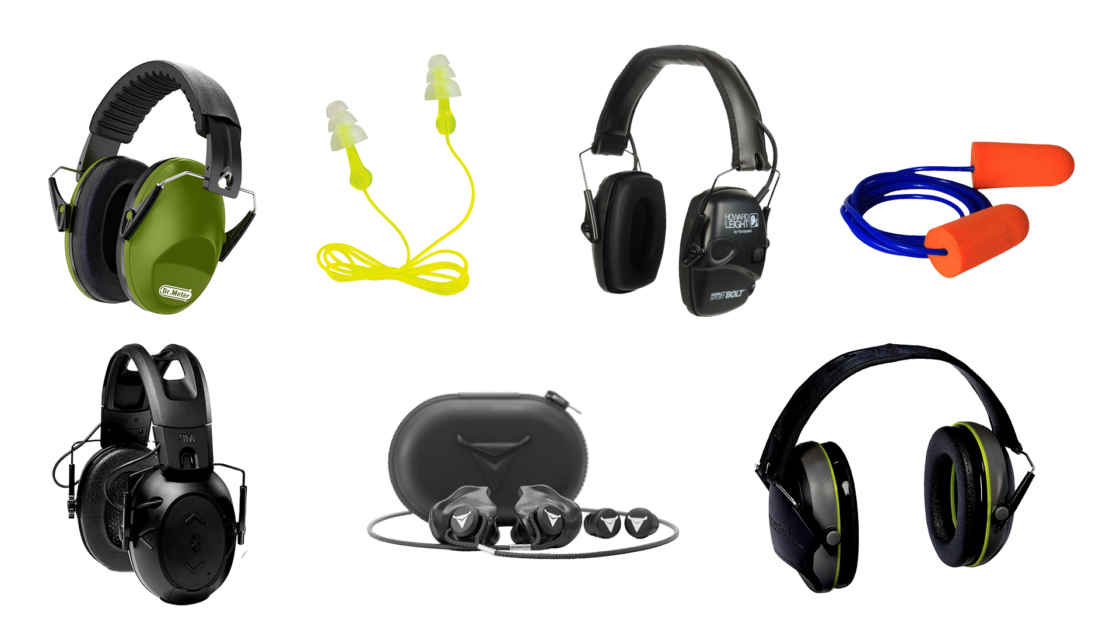
Why You Need Shooting Ear Protection
Every time you pull the trigger, you’re setting off a mini-explosion just inches from your ears.
Most firearms produce sound levels well above 140 dB, which is the threshold where permanent hearing damage becomes a real risk. One unprotected shot can be enough to cause harm, and repeated exposure only makes the problem worse. Tinnitus and long-term hearing loss are common among shooters who treated ear protection as optional.
The goal is simple. You want to bring the noise down to a level your ears can tolerate, and that means using protection with a proper Noise Reduction Rating. A rating of 22 or higher is the baseline I consider acceptable for range use. Everything in this guide meets or exceeds that number.
Before building this list, I tested a wide range of options and compared them for comfort, performance, and real-world usability. What follows is the gear that earned a place.
How I Set Up To Review the Best Shooting Ear Protection

My background as a special operations sniper taught me many lessons, and protecting your hearing ranks near the top.
Long days on the range make the point clear. You only get one set of ears, and once the damage is done, it stays with you. I have used nearly every style of hearing protection available and have worked with most of the major manufacturers over the years, so I started this project with a solid baseline.
To make this guide complete, I reached out to colleagues who shoot often and asked which products they trusted. I ordered anything I had not used personally, ran each option through the same range sessions, and compared them for comfort, clarity, and noise reduction.
The list you will see below came from that process.
Shooters generally rely on three categories of hearing protection, and each one works best for a different kind of environment.
- Earplugs: These sit inside the ear canal and are usually made of foam. They are inexpensive, simple to carry, and disposable. Good for casual use or adding a second layer of protection.
- Earmuffs: These cover the entire ear and provide reliable protection for most calibers. They cost more than foam plugs but hold up well over time.
- Electronic Hearing Protection: These use internal microphones to lower gunshot noise while allowing normal speech to pass through. They are useful when you need to hear range commands or communicate with other shooters.
No single product works for every shooter. People have different budgets, different calibers, and different comfort needs.
That is why I broke this guide into clear categories and highlighted the best option in each one.
Best Shooting Ear Protection:
The best shooting ear protection is:
- ShellShock EXO PRO (Best Overall)
- Howard Leight Impact Sport Bolt (Best Electronic)
- Decibullz Custom Ear Plugs (Best In-Ear)
- 3M Peltor Sport Earmuffs (Best Ear Muff)
- Dr. Meter Kids Earmuffs (Best for Kids)
- Peltor Sport Tactical 500 (Premium)
Hearing Protection – Editor’s Choice
Best Overall ShellShock EXO PRO | 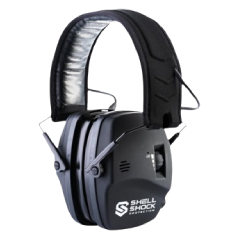 |
| See Price |
Best Electronic Howard Leight: Impact Sport Bolt | 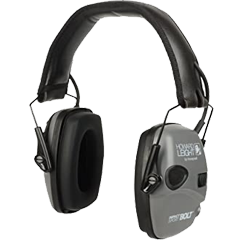 |
| See Amazon Price |
Best Ear Plugs Decibullz Custom Molded | 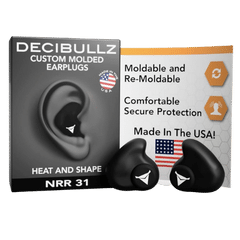 |
| See Amazon Price |
Best Ear Muffs 3M PRO Shotgunner Low Profile | 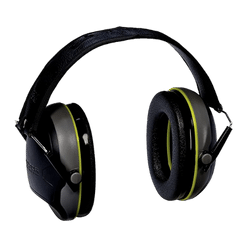 |
| See Amazon Price |
Best For Kids Dr. Meter Kids Noise Reduction | 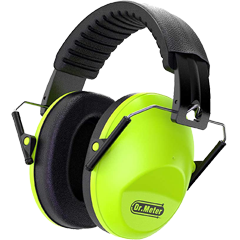 |
| See Amazon Price |
Best Premium Peltor Sports Tactical 500 | 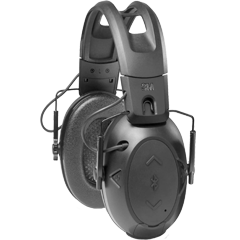 |
| See Amazon Price |
Spec Comparison of the Best Shooting Ear Protection
| Name | Type | NRR | Reduced dB | |
|---|---|---|---|---|
| Decibullz Custom Molded Earplugs | Custom-Fit Plugs | 31 | -12 dB | 0.6 oz |
| Radian Resistor | Ear Plug | 32 | -12.5 | 0.8 oz |
| Peltor Sport Tri-Flange | Tri-Flange Ear Plug | 26 | -9.5 dB | 0.64 |
| 3M Peltor Sport Shotgunner II Low Profile | Ear Muffs | 24, 27, 30 | -8.5, -10, -11.5 dB | 8.8, 10.1, 12.3 oz |
| Dr. Meter Kids Noise Reduction Ear Muffs | Ear Muffs | 27 | -10 dB | 8 oz |
| Howard Leight Impact Sport BOLT | Electronic Headset | 22 | -7.5 dB | 1 lb |
| Peltor Sports Tactical 500 | Electronic Headset | 26 | -9.5 dB | 1.4 oz |
| Walker's Razor Slim Shooter Electronic Muffs | Electronic Headset | 23 | -8 dB | 15.4 oz |
| ShellShock EXO PRO | Electronic Earmuffs | 22 | -7.5 dB | 13.2 oz |
Reviews of the Best Electronic Shooting Ear Protection
Electronic earmuffs are our favorite style of hearing protection for most types of shooting.
An Electronic earmuff helps amplify conversations, and hear safe noises, while also protecting you from the unsafe levels of sound from gunshots.
Best Electronic
 |
| See Price | |
 |
| See Amazon Price | |
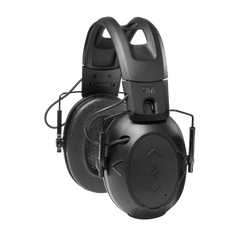 |
| See Amazon Price | |
 |
| See Amazon Price |
1. Shellshock EXO Pro : BEST OVERALL
Shellshock EXO Pro
Combining excellent sound capability, durable construction, and thoughtful features, the ShellShock EXO PRO is the ultimate hearing protection for shooters.
- Protection A
- Comfort A+
- Usability A+
- Value A
Our Grade
A+
Reader’s Grade
A+
Based on 1 Reviews
Your Grade
Do You Own This Accessory? Leave A Review
Success Your Grade Has Been
Added To Our Reader’s Score
We use email to verify the accuracy of our reviews. We promise to never spam you.
SHELLSHOCK EXO PRO SPECS
- NRR Rating 22
- Reduced dB -7.5 dB
- Microphones Omnidirectional microphones
- Attack Time .5 ms
- Weight 13.2oz
I’ve tried a lot of hearing protection over the years, but the ShellShock EXO PRO has become my absolute favorite. They’ve taken over from my longtime go-to, the Howard Leight Bolts.
Here’s why I believe they are the best overall choice for shooting ear protection in this list.
First off, the sound capability is fantastic. With a 22dB NRR rating and a super-fast attack time of 0.5ms, these cut out noise just as well as the Bolts.
I tested them by clapping while talking to friends, and the response was spot on—quick and clear. They let me have conversations without any awkward delays, which is a big deal at the range.
Construction-wise, the ShellShocks are a clear winner. They’re lighter and built better than the Bolts. The headband is super comfy with just the right amount of padding, and the cheekwell indent is perfect for rifle shooting.
Speaking of the build quality, I see no cheap materials here—everything feels solid and well-made.
One little feature I love is the LED light indicator. I’ve lost count of how many times I’ve accidentally left my hearing protection on and drained the battery. The LED light solves this problem perfectly. Some might worry about the light giving away your position, but that’s a minor issue in my book.
The gel pads are another big plus. They’re incredibly comfortable and create a great seal, reducing pressure from my eye protection. Before, I had to buy gel pads separately for my Bolts, but with the ShellShocks, they come included.
In short, the ShellShock EXO PRO is now my go-to hearing protection. Their superior design, comfort, and thoughtful features have made them a permanent fixture in my range bag.
You can read the full review of the ShellShock EXO PRO here.
ShellShock EXO PRO Pros and Cons
- Exceptional Sound Capability
- Comfortable Fit
- High-Quality Construction
- Convenient LED Light Indicator
- Included Gel Pads
- Clear Communication
- Limited Availability
2. Howard Leight Impact Sport Bolt : Editor’s Choice
Howard Leight Impact Sport Bolt
Good hearing protection, upgraded electronics over the standard version, low profile, and a great value! What’s not to love?
- Protection A-
- Comfort A
- Usability A+
- Value A+
Our Grade
A
Reader’s Grade
A-
Based on 4 Reviews
Your Grade
Do You Own This Accessory? Leave A Review
Success Your Grade Has Been
Added To Our Reader’s Score
We use email to verify the accuracy of our reviews. We promise to never spam you.
Howard Leight Impact Sport Bolt Specs
- NRR Rating 22
- Reduced dB -7.5 dB
- Microphones 2 Directional Microphones
- Attack Time .5 ms
- Weight 1 lb
Howard Leight Impact Sport Bolt Review
When it comes to hitting the shooting range, the Howard Leight Impact Sport Bolt ranks as my second-best hearing protection. It stands out as the best electronic choice in my lineup, and here’s why.
First off, these earmuffs balance sound amplification and noise reduction perfectly. The sound quality is impressive, amplifying ambient noises while blocking out harmful sounds more effectively than most in this price range.
One feature I really appreciate is the auto-shut-off mechanism. I’ve often lost track of time and forgotten to turn off other earmuffs, which drain their batteries. The Impact Sport Bolt’s auto-shut-off is a game-changer. It shows a thoughtful design that values user convenience and preserves battery life.
Having used various earmuffs in military and commercial settings, durability is a big deal for me. The Impact Sport Bolt has proven to be rugged and reliable, outlasting other sets I’ve owned and offering great value.
Comfort is key during long shooting sessions, and these earmuffs excel here too. They have a low-profile design that fits well with rifles or shotguns, are lightweight, and remain comfortable for extended wear without causing discomfort.
While these earmuffs are fantastic, they have a few drawbacks. Occasionally, I’ve experienced electronic interference when my cell phone is too close, and they lean towards the lower end in terms of sound protection required for some settings.
To enhance these already excellent earmuffs, check out our ear protection upgrades section and look into the Noisefighter ear pads and a carrying case. These upgrades can further elevate your experience and provide additional comfort during prolonged use.
Howard Leight Impact Sport Bolt Pros and Cons
- Loud ambient volume
- Auto-Shutoff
- Low Profile
- Lightweight (relatively)
- Inexpensive
- Low-end of sound protection
- Electronic noise interference possible
3. Peltor Sport Tactical 500 : Premium Option
Peltor Sport Tactical 500
Everything about these earmuffs is premium. Compared to other models, these things are noticeably quieter. However, they’re heavier, larger, and more expensive.
- Protection A+
- Comfort A-
- Usability A
- Value A-
Our Grade
A
Reader’s Grade
B+
Based on 3 Reviews
Your Grade
Do You Own This Accessory? Leave A Review
Success Your Grade Has Been
Added To Our Reader’s Score
We use email to verify the accuracy of our reviews. We promise to never spam you.
Peltor Sport Tactical 500 Specs
- NRR Rating 26
- Reduced dB -9.5 dB
- Microphones 2 Recessed Microphones
- Attack Time N/A
- Weight 11.4 oz
Peltor Sport Tactical 500 Review
The Peltor Sport Tactical 500 is seriously impressive when it comes to noise protection. Using them felt like stepping into a soundproof room—there’s a clear “wow” factor.
What makes these earmuffs stand out is their top-notch noise reduction and Bluetooth capability. Out of all the electronic earmuffs I’ve tested, these are easily the most premium.
However, they didn’t snag the absolute top spot for a few reasons. While the Bluetooth is great for listening to music or podcasts, it doesn’t let you adjust ambient noise levels as much as my top pick. The volume controls, which use up and down buttons, are a bit less intuitive than a simple dial. Plus, the earmuffs are a bit bulky, which can be awkward when handling a rifle or shotgun.
Price is another consideration. At nearly three times the cost of my top pick, these earmuffs are a serious investment. While they offer excellent features and noise reduction, that high price tag might be a dealbreaker for some.
Still, the Peltor Sport Tactical 500 is fantastic. In an indoor range setup where you’d want superior sound protection, these earmuffs shine. They were the standout performers during our sound booth testing, bar none.
If you’re in the market for the quietest earmuffs and willing to invest in a larger, premium set, look no further than the Peltor Sport Tactical 500.
Peltor Sport Tactical 500 Pros and Cons
- Super quiet
- Sturdy build quality
- Bluetooth audio
- A bit too large and heavy
- Expensive
Reviews of the Best Earmuffs for Shooting
Although we love the mentioned electronic ear muffs, they aren’t always necessary.
Standard shooting earmuffs are less expensive and can be a very handy option for hearing protection when shooting (especially as an extra set for someone else or for kids).
#1 3M Peltor Sport Shotgunner II Low Profile : Best Non-Electronic Muffs
3M Peltor Sport Shotgunner II Low Profile
For non-electronic earmuffs, these are our favorites because they’re simple, sturdy, and quiet.
- Protection A+
- Comfort A
- Usability A-
- Value A+
Our Grade
A
Reader’s Grade
B
Based on 1 Reviews
Your Grade
Do You Own This Accessory? Leave A Review
Success Your Grade Has Been
Added To Our Reader’s Score
We use email to verify the accuracy of our reviews. We promise to never spam you.
3M Peltor Sport Shotgunner II Specs
- NRR Rating 24, 27, 30
- Reduced dB -8.5 dB, -10 dB, -11.5 dB
- Weight 8.8 oz, 10.1 oz, 12.3 oz
3M Peltor Sport Shotgunner II Low Profile Review
I’ve given the 3M Peltor Sport Shotgunner II a thorough test, and honestly, it’s a top choice for non-electronic ear protection. What I love about these earmuffs is their no-frills approach. They don’t have fancy electronics, but they get the basics right.
Comfort and practicality are what matter most to me, and these earmuffs nail both. They’re the right size and weight, and the price is just right. After a long day at the range, comfort is key, and these earmuffs fit snugly without feeling too tight. The headband is designed to stay comfortable, even during extended wear.
I really appreciate the design. The tapered cuffs don’t get in the way when I’m handling rifles or shotguns, which makes shooting smoother. They’re collapsible, so they’re easy to store, and they’re durable. Plus, the removable foam insert makes the cleaning process easy.
The 21-decibel noise reduction might not be enough for louder calibers like .308 or 6.5 Creedmoor, but for most shooting, they’re more than adequate. For those high-caliber days, I double up with foam inserts for extra protection.
In the world of non-electronic earmuffs, the 3M Peltor Sport Shotgunner II stands out for its comfort, durability, and straightforward effectiveness. They’re a dependable choice if you’re after no-fuss ear protection.
3M Peltor Sport Shotgunner II Low Profile Pros and Cons
- Quiet
- Comfortable
- Inexpensive
- No electronics
#2 Dr. Meter Kids Noise Reduction EarMuffs : Best for Kids
Dr. Meter Kids Noise Reduction EarMuffs
A great set of non-electronic earmuffs for children.
- Protection A+
- Comfort A
- Usability A+
- Usability A+
Our Grade
A+
Reader’s Grade
A+
Based on 1 Reviews
Your Grade
Do You Own This Accessory? Leave A Review
Success Your Grade Has Been
Added To Our Reader’s Score
We use email to verify the accuracy of our reviews. We promise to never spam you.
Dr. Meter Kids Noise Reduction Ear Muffs Specs
- NRR Rating 27
- Reduced dB -10 dB
- Weight 8 oz
Dr. Meter Kids Noise Reduction Earmuffs Review
I recently tried out the Dr. Meter Kids Noise Reduction Earmuffs, and they’ve made a huge difference for my ten-year-old.
They’ve become our go-to for shooting sessions and any loud events like music gigs, sports games, or even just busy days on the farm. What really stands out to me is their design and how easy they are to adjust.
Right off the bat, I noticed how well these earmuffs fit kids. They’re not bulky like adult versions; instead, they have a clever adjustment system. A simple tug on the side adjusts the fit, thanks to the hinged design and metal arch. Once they’re on, they form a solid noise barrier.
The cushioning is another highlight. It fits snugly around my son’s head, even when extended, and the vibrant blue color is perfect for kids. I also appreciate how versatile these earmuffs are. You can adjust the fit to change the level of noise reduction, making them adaptable to different environments and noise levels.
What makes these earmuffs stand out as the top choice for kids is their thoughtful design. Many earmuffs, even electronic ones, can be too big or uncomfortable for children. But these Dr. Meter earmuffs are smaller, providing a secure fit with a Noise Reduction Rating (NRR) of 27.
Dr. Meter Kids Noise Reduction Earmuffs Pros and Cons
- Excellent noise protection
- Smaller size for better fit for kids
- Inexpensive
- Multiple colors
- Not electronic
Reviews of the Best In-Ear Protection for Shooting
Earplugs are extremely useful for protecting your hearing while shooting. A good set of in-ear plugs offers excellent protection, plus they’re compact and easy to keep in your pocket for quick access.
You can also find disposable earplugs, which are a budget-friendly option to keep extra sets on hand. They’re great for emergencies or for sharing with others who need hearing protection. Just remember, once disposable earplugs are used, they’re meant to be thrown away, not returned.
#1 Decibullz Custom Molded Ear Plugs : Best In-Ear Plugs
Decibullz Custom Molded Ear Plugs
The Decibullz custom-molded ear plugs are an incredible option for hearing protection and our go-to set of plugs for shooting.
- Protection A+
- Comfort A+
- Usability A
- Value A+
Our Grade
A+
Reader’s Grade
B+
Based on 4 Reviews
Your Grade
Do You Own This Accessory? Leave A Review
Success Your Grade Has Been
Added To Our Reader’s Score
We use email to verify the accuracy of our reviews. We promise to never spam you.
Decibullz Custom Molded In-Ear Plugs Specs
- NRR Rating 31
- Reduced dB -12 dB
- Weight 0.6 oz
Decibullz Custom Molded Ear Plugs Review
The Decibullz Custom Molded Ear Plugs have proven to be an exceptional find. What first caught my attention was their innovative customization approach.
I came across them at the SHOT Show’s media day, and in just a few minutes, they had molded a set of earplugs specifically for me. The fit was spot-on, and the comfort was immediately noticeable.
It was impressive how these earplugs stood out amidst all the firearms and gear. The reactions from others were overwhelmingly positive; everyone who tried them were equally amazed.
What really sets Decibullz apart is how they’ve simplified the custom-molding process. Instead of spending a fortune and hours at a gun show, you can mold these earplugs at home. A quick dip in warm water, a bit of molding, and you’ve got a perfect fit. If it’s not quite right, just reheat and adjust until it is.
Plus, their versatility is a huge bonus. The interchangeable inserts let you switch between different functions, whether it’s acoustic filters or radio earpieces. The noise reduction is outstanding—sometimes, it feels almost too quiet.
I’ve ranked Decibullz as the best in-ear protection because they combine excellent protection, incredible comfort, and affordability. Before you splurge on pricier electronic earmuffs, I highly recommend giving Decibullz a try. They truly redefine what in-ear protection can be.
Decibullz Custom Molded Ear Plugs Pros and Cons
- Custom fit
- Inexpensive
- Modular
- Extremely quiet
- None
#2 Radian Resistor
Radian Resistor
These disposable ear plugs are an inexpensive no-nonsense solution that belong in everyone’s range bag.
- Protection A
- Comfort B+
- Usability B
- Value A+
Our Grade
A-
Reader’s Grade
A+
Based on 1 Reviews
Your Grade
Do You Own This Accessory? Leave A Review
Success Your Grade Has Been
Added To Our Reader’s Score
We use email to verify the accuracy of our reviews. We promise to never spam you.
Radian Resistor Specs
- NRR Rating 25
- Reduced dB -12.5 dB
- Weight 0.8 oz
Radian Resistor Reviews
The Radian Resistor 32 Foam Earplugs definitely earn a spot on my list, but I see them more as a solid backup rather than a full replacement for my main ear protection. They’re perfect for those times when I need a quick, disposable option.
I love how convenient they are. Each pair comes in its own poly bag, which is great for hygiene and on-the-go use. I never have to worry about wear and tear since I can just grab a fresh pair when needed.
It’s reassuring to know these earplugs are tested to ANSI standards in Radians’ top-notch lab, so I trust their reliability.
That said, they’re not ideal for long-term use. They work well for short bursts, but extended wear can get uncomfortable, which is common with disposable foam earplugs. I consider them an essential addition to my gear, ready to step in when needed, but not a standalone solution for long hours of protection.
Overall, their disposability, ease of use, and effectiveness make them a valuable asset in my toolkit, ensuring I’m always ready to protect my hearing.
Radian Resistor Pros and Cons
- Bulk packaging
- Inexpensive
- Can be inconvenient
- Must be inserted properly
- One-time use
#3 Peltor Sport Tri-Flange
Peltor Sport Tri-Flange
These Tri-Flange ear plugs are a reusable ear plug option with a lanyard for easy wear when not in use around your neck.
- Protection A-
- Comfort C
- Usability A
- Value A
Our Grade
B+
Reader’s Grade
B
Based on 1 Reviews
Your Grade
Do You Own This Accessory? Leave A Review
Success Your Grade Has Been
Added To Our Reader’s Score
We use email to verify the accuracy of our reviews. We promise to never spam you.
Peltor Sport Tri-Flange Specs
- NRR Rating 26
- Reduced dB -9.5 dB
- Weight 0.64 oz
Peltor Sport Tri-Flange Review
I’ll be honest—when it comes to the Peltor Sport Tri-Flange earplugs, they aren’t my cup of tea. It’s not that they aren’t functional; they just don’t quite suit my ears the way I’d prefer.
Yet, despite my personal reservations, there’s a reason these made it to the third spot on our list of the “Best in Ear Plugs.”
What stands out to me is their affordability and reusability. They offer a budget-friendly option for decent ear protection without breaking the bank. I’ve seen these earplugs work wonders for many of my colleagues; it’s just that my ears don’t seem to agree with this style.
For me, the smooth plastic tends to make them slip out occasionally, and the flanges designed to keep them in place often cause more discomfort than I’d like. With an NRR rating of 26, they don’t quite stack up to other options on our list that have higher ratings in the 30s.
That said, if you’re someone who doesn’t mind this style and is looking for a budget-friendly option that has worked well for many shooters, the Peltor Sport Tri-Flange earplugs might just be the right fit for you.
Peltor Sport Tri-Flange Pros and Cons
- Reusable
- Lanyard helps hold ear plugs
- Relatively low NRR
- Uncomfortable
Editor’s Choice: What I Actually Own and Use
When I head to the range or head out for a hunt, I either take my Howard Leight Impact Sport Bolt earmuffs or my Decibullz custom-molded earplugs.
In my standard range bag, I keep my Howard Leights, with their Noisefighter gel pads, in a carrying case (both below), my Decibullz plugs, and a bottle of Radian Resistor foam earplugs.
This allows me to choose between my earmuffs or my earplugs depending on the style of shooting, and it allows me to hand out a set of foam plugs to anyone who forgot their ear protection.
For most pistol and rifle work, I use my electronic earmuffs. However, if I am going to be on a rifle for a while, I will often use my Decibullz. If I’m shooting clay targets with a shotgun, I almost always use my Decibullz because of their low profile.
At home, I have a second set of Howard Leight earmuffs because they are so great for letting someone use them. Especially if I am teaching them so that I don’t have to yell. Of course, I also have kid-sized earmuffs for my children.
Upgrades for Your Shooting Ear Protection
Just because you have hearing protection doesn’t mean you can’t make it even better.
Here’s a must-have accessory that can up your game: gel pads for electronic earmuffs.

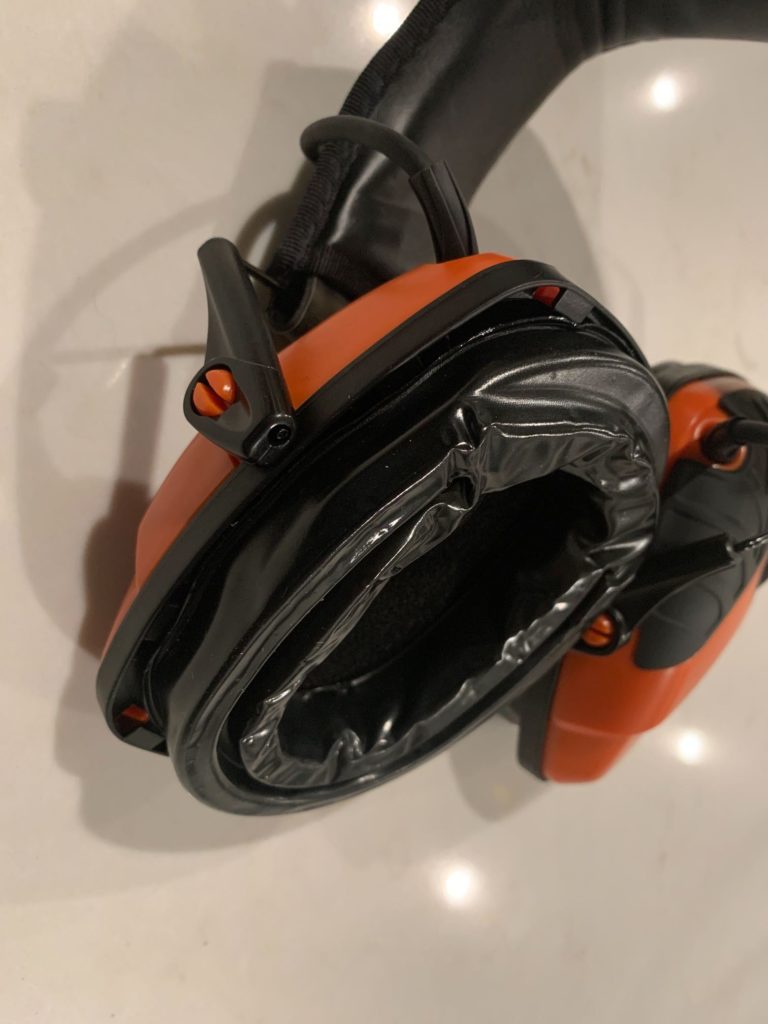
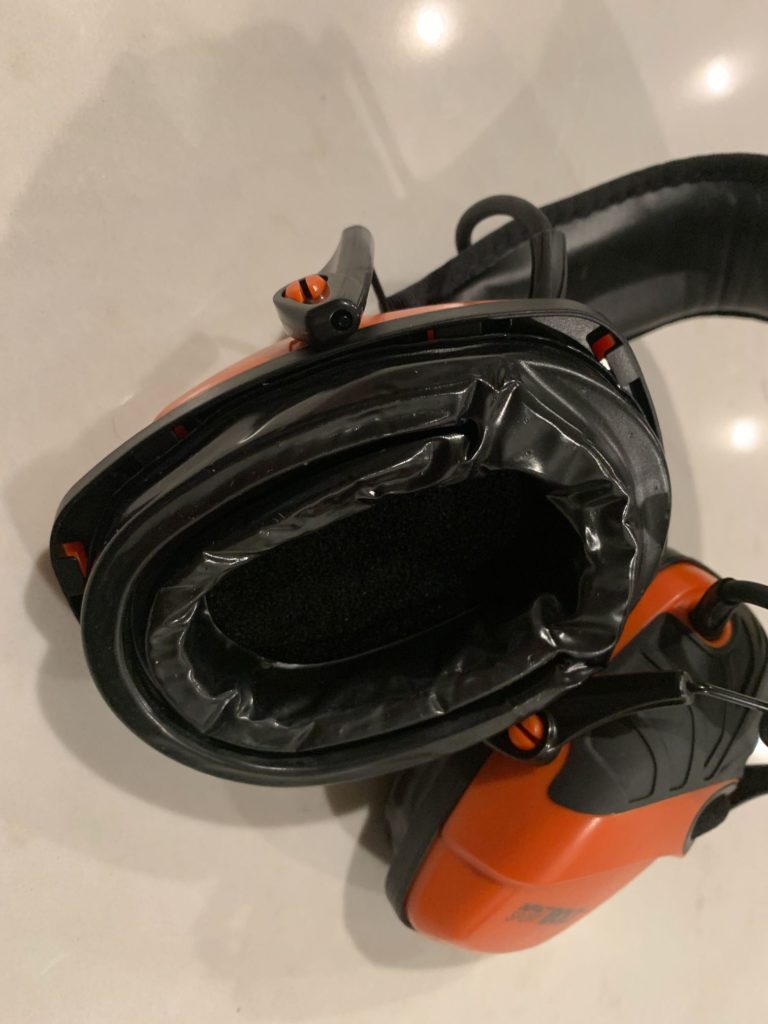
Noisefighters Gel Filled Ear Pads
If you’re thinking about upgrading, these gel pads are a game-changer. They might seem a bit unconventional on my Howard Leights, but trust me, the comfort they offer is phenomenal. They fit snugly around my ears and even work well with shooting glasses without pressing uncomfortably against my head.
For long shooting sessions, that kind of comfort is priceless.
What really impressed me is how these pads are designed to work seamlessly with eyewear. This not only boosts comfort but also helps create a better seal around your ears. The result? Up to 10 decibels less noise leakage, which can make a big difference over time.
These pads are also built to last. They can handle extreme temperatures from negative 100 to 300 degrees Fahrenheit, though I don’t shoot in those extremes. Still, their durability is reassuring.
Keeping them clean is simple—just wipe them with warm, soapy water. Avoid submerging them though, due to the tiny air hole at the bottom.
Compared to pricier options, Noisefighters Gel Filled Ear Pads hold their own. For regular shooting, they perform brilliantly and offer great value. If you’re serious about your ear protection, these pads are a smart investment. They’re comfortable, durable, and could be a real asset for your hearing.
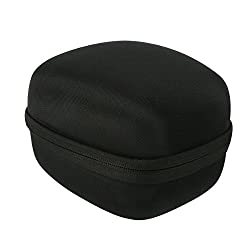
Carrying Case for Howard Leight Impacts
When it comes to protecting my electronic earmuffs, the carrying case I found is highly effective. It not only safeguards them but also keeps my gear in good condition and ready for use at the shooting range.
The case combines durability with a touch of flexibility. The strong nylon cover and hard shell offer robust protection while allowing just enough give to ensure my earmuffs are safeguarded without applying excessive pressure.
Inside, the microfiber lining is a thoughtful touch, gently protecting my earmuffs from scratches and bumps. The mesh pocket for spare batteries or cables is a practical addition, keeping everything organized and easily accessible.
I tested it with my Howard Leight earmuffs, and they fit snugly and securely. It took a little adjustment to get them positioned just right, but once settled, they were perfectly in place. Closing the case was easy, and the reassuring click gave me confidence that my gear was well-protected.
What truly won me over was the peace of mind it provided. I no longer worry about my earmuffs getting damaged amidst my other shooting gear. It’s a small investment with significant benefits, ensuring my hearing protection stays in top shape.
Buyer’s Guide to Shooting Ear Protection
There are quite a few different types of earmuffs and ear protection devices available on the market. Some can be incredibly cheap and portable, like the tiny disposable plugs you put inside your ears. Other styles can cover your entire ear and are more comfortable when wearing.
With so many options to choose from, it can be hard to decide on what to buy.
Well, in this section, we’ll talk about the factors affecting hearing loss, the specs you need to pay attention to, and the types of headphones on the market.
Things to Consider
What Types of Hearing Protection Should You Get?
There are three main types of hearing protection, and each has its pros and cons. Let’s take a look at each type to see which best fits your needs and review the key specifications to help you make the right choice.
Earplugs
Earplugs for noise protection come either as disposable earplugs or as reusable earplugs.
Disposable earplugs are by far the cheapest ear protection you can buy. These tiny plugs can also be very effective, with some offering 30dB and better noise reduction. They’re usually made out of some kind of foam or moldable polymer. In order to get the most use out of them, you squish them into a small cylinder, which you then insert into your ear canal. The plugs then “re-inflate” to form a tight molded seal to your ear channel.
But there are permanent earplugs as well. These are made out of a heavy-duty polymer. Some are made to be specially molded for better comfort like the Decibullz while others like the Tri-Flanges are not.
On the downside, earplugs might not fit all ear channels, and they will muffle out all sounds. Some people are also allergic to the materials, and others find them to be chafe.
- Most effective form of hearing protection
- Ear plugs have an exceptionally high NRR rating
- Lightweight and portable
- Share with guests who don’t have their own
- Disposables are dirt cheap often coming in large boxes
- Most effective form of hearing protection
- Not inserting properly can lead to them falling out
- If dropped, you’ll more than likely need a new pair
- Moldable plugs can become bulky to wear underneath muffs or headsets
- Muffle all sounds including range communications
Earmuffs
Earmuffs provide excellent ear protection and typically feature a headband with foam pads that cover the entire ear. They can be worn either on top of your head or behind it. Earmuffs are generally affordable, comfortable, and highly durable.
The only downside to this type of ear protection is that earmuffs can be heavy and bulky. They can also feel hot and sweaty in warm weather. Also, earmuffs often don’t provide as much ear protection as earplugs might offer. This means you need to be careful when buying these to ensure you get sufficient protection.
- Comfortable to wear
- Super easy to put on and take off
- Affordable
- Easily used with ear plugs in order to receive enhanced ear protection
- Super durable even if tossed around
- Bulky and may snag in tight spaces
- Sweaty and sticky in warmer weather
- Not as effective as plugs
- Using with headwear can be uncomfortable or impossible to wear
- Can interfere with your cheek weld on long gun buttstock
Earmuffs With Sound-circuit Technology
Sound-circuit technology earmuffs are designed to screen out loud blasts of the firearm but allow you to hear the natural sounds around you. This is an incredible feature for shooters because the loud and damaging noise of gunfire is muffled, but you can still hear your instructors or friends on the gun range as they speak.
These earmuffs are usually quite comfortable, relatively compact, and can be accompanied by a huge variety of special features, such as Bluetooth. These electronic earmuffs come with a range of features and capabilities, and many are surprisingly affordable. That being said, just keep in mind that the main downside of these earmuffs is that they need batteries.
- Allows you to hear communication around you through use of installed microphones
- Comfortable
- Some can connect to Bluetooth allowing use of cell phone while wearing
- Have special features
- Usually a more expensive option
- Not waterproof
- Not as effective as ear plugs
- Batteries required
- Heavy
Specs to keep in mind when choosing electronic ear protection
When choosing electronic hearing protection, you should keep the following specs in mind:
Microphone Direction and Number:
To hear softer sounds with electronic headsets, microphones, and internal speakers are essential. Ideally, you’ll find one microphone/speaker set per ear cup, arranged directionally. For range, hunting, or practice, one set per cup works well. However, in active combat or tactical situations, two sets (one per cup) may be preferred.
More important than the number of microphones is their type. Directional mics help you pinpoint where amplified sounds are coming from, while high-gain mics are more sensitive and pick up more sound, though they can also capture more static and feedback.
Attack Time:
Attack time is a crucial but often overlooked aspect of electronic headsets. It refers to the response time of the headset in reacting to noises above a certain threshold. For example, if a headset blocks noises above 82 decibels, you’ll want to know how quickly it starts blocking those sounds. A shorter attack time means less delay in protecting your ears from loud noises and improves communication with those around you. The faster the attack time, the better the headset handles sudden, loud sounds.
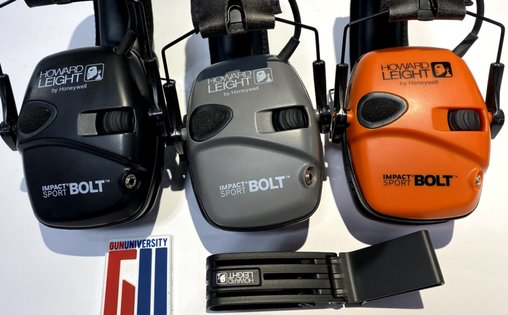
What Noise Reduction Do You Need?
There are three factors that impact hearing loss: distance, time, and decibel level. Distance matters because the further you are from the muzzle, the less intense the sound. Time is a factor because gun blasts are short, not continuous, so even if you’re firing multiple rounds quickly, the initial blast is what counts for ear protection.
Your ears can only handle noise up to 140 dB before you risk immediate damage. For example, a Glock handgun can hit around 162 dB, and a Remington 700LTR can reach 167 dB. Without proper ear protection, even a basic handgun can cause instant, permanent hearing loss.
To protect your ears, you need to bring the noise level down to 140 dB or less, with 120 dB being even better. When you’re shopping for shooting ear protection, you’ll see Noise Reduction Ratings (NRR) instead of decibel levels. Keep this in mind to make sure you’re getting the right protection.
Recommended Noise Reduction Ratings (NRR) for Shooting Protection
Noise Reduction Rating (NRR) is a unit of measurement used to determine the effectiveness of hearing protection devices to decrease sound exposure within a given workspace. In order for a protective device to get an NRR, it must be tested and approved by the American National Standards (ANSI) in accordance with the Occupational Safety & Health Administration.
The higher the NRR number, the greater the noise reduction will be.
You should look for ear protection that offers a noise reduction rate of at least 22. A noise reduction of 30 is ideal, especially if you are operating louder and larger weapons.
To be on the safe side, you can use the following NRR levels to determine the best fit for the type of gun you are using.
Lower caliber handguns – minimum NRR rating: 22
Larger bore handguns and long guns – minimum NRR rating: 25
Large caliber handguns, larger long guns, and shotguns – minimum NRR rating: 27
This isn’t to say that you’re unsafe shooting a large caliber handgun with NRR 22 headphones, but if you were to and wanted to be on the safer side, or perhaps you’d be doing this for a prolonged period of time, then you might want to double your hearing protection to increase your NRR rating.
Shooting Ear Protection: Frequently Asked Questions
What are the different types of shooting ear protection available?
Most shooters use earplugs or earmuffs. Earplugs fit inside the ear canal and block noise at the source. Earmuffs sit over the ears and seal out sound with padded cups. Both styles work, and many shooters use them together for louder calibers.
What does electronic hearing protection do?
Electronic models use microphones and internal circuitry to cut down gunshot noise while keeping normal sounds clear. You can hear range commands or talk to other shooters, and the loud impulse from a shot gets reduced before it reaches your ears.
How do noise reduction ratings affect ear protection?
The Noise Reduction Rating (NRR) tells you how much sound the device can reduce when worn correctly. A higher number means more protection. Anything at or above 22 NRR is a reasonable starting point for shooting.
What features help with maximum hearing protection?
A proper seal matters most. Gel pads, well-shaped ear cups, and a comfortable headband help keep that seal in place. Electronic models with clear audio and consistent volume control can improve communication without lowering protection.
What should I look for when choosing ear protection for indoor shooting?
Indoor ranges create stronger reflections and higher overall noise. Choose protection with a higher NRR and consider doubling up with earplugs and muffs if you shoot rifles or high-pressure handguns inside.
How does wearing ear protection prevent hearing damage?
Gunfire produces sharp pressure waves that can injure the inner ear. Quality protection lowers that impact before it reaches the sensitive parts of your hearing system. Consistent use reduces the risk of permanent damage, even if you shoot often.
Should I double up with earplugs and earmuffs?
Doubling up can be a smart move for indoor ranges, braked rifles, or anything that produces sharp, high-pressure noise. Foam plugs handle part of the blast, and muffs add a second layer of protection. The combined effect lowers the risk of long-term damage and keeps your hearing safer during long training sessions.
Do electronic earmuffs introduce delay or distortion?
Some electronic models process sound cleanly, and some do not. Lower-cost units can add a slight hiss or clip the beginning of conversations. Higher-quality models tend to handle voices and range commands much better. The protection level stays the same, but clarity and comfort can change from brand to brand.
Final Word on Shooting Ear Protection
Hearing loss from gunfire is permanent, and once it starts, there is no easy way to reverse it. Good protection is the simplest way to avoid that problem.
The gear in this guide gives you a solid starting point, and any of it is better than showing up at the range unprotected. Use something every time you shoot, even if it is a quick trip with a familiar rifle or handgun.
If you are putting together a complete range setup, take a look at our guide to shooting eye protection. Safe shooting depends on more than accuracy, and the right equipment keeps you on the range longer without unnecessary risks.
Recent Posts
December 15, 2025
December 15, 2025
December 12, 2025
December 12, 2025

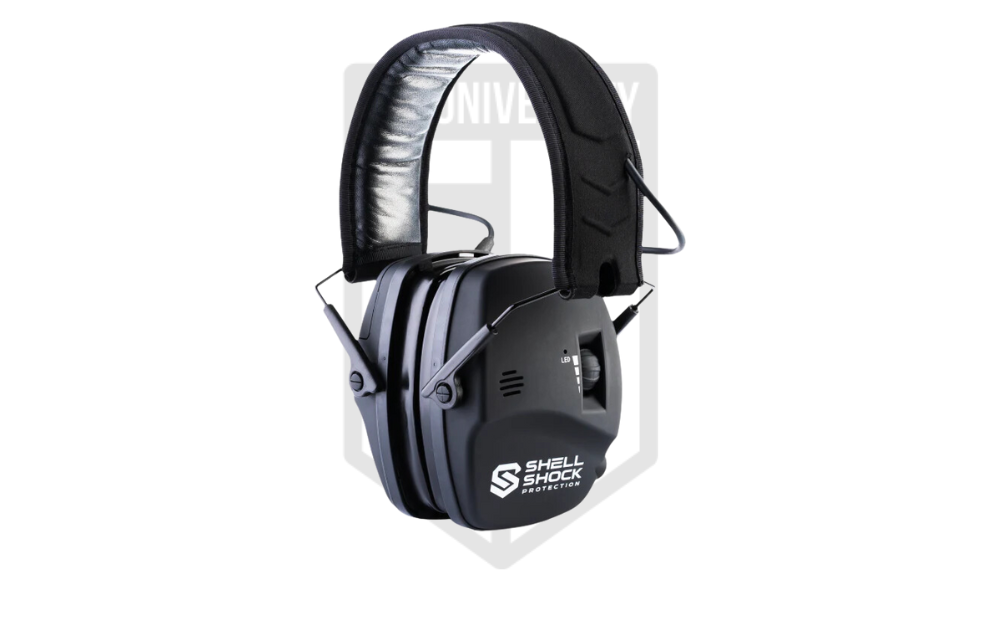
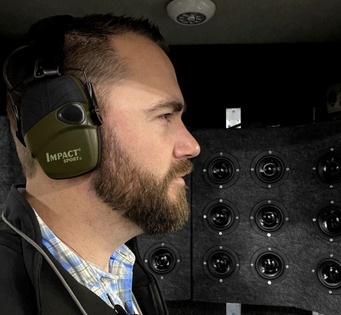
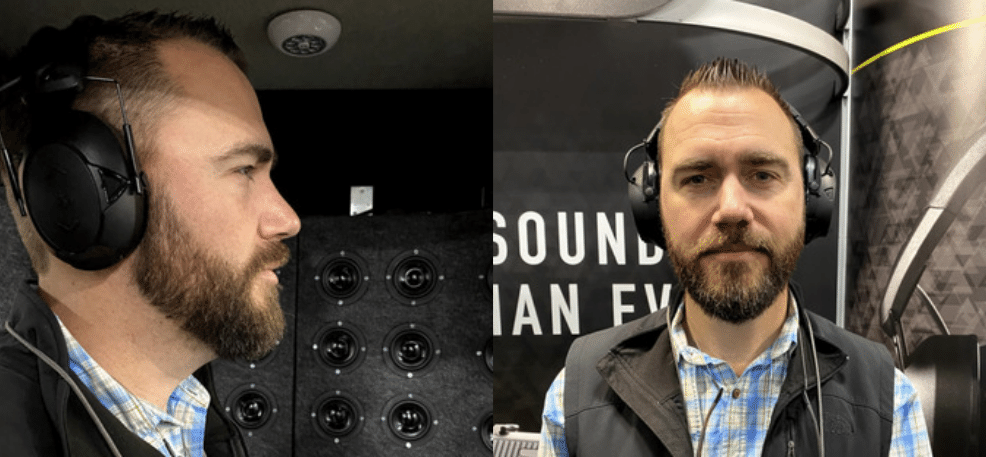
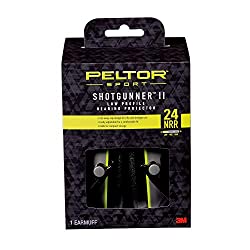
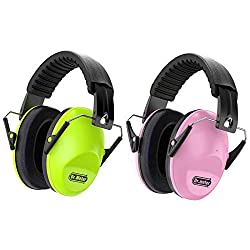


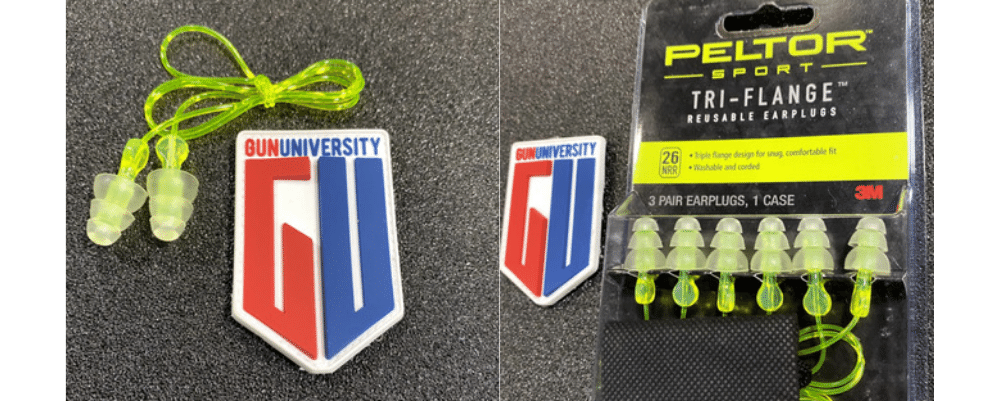
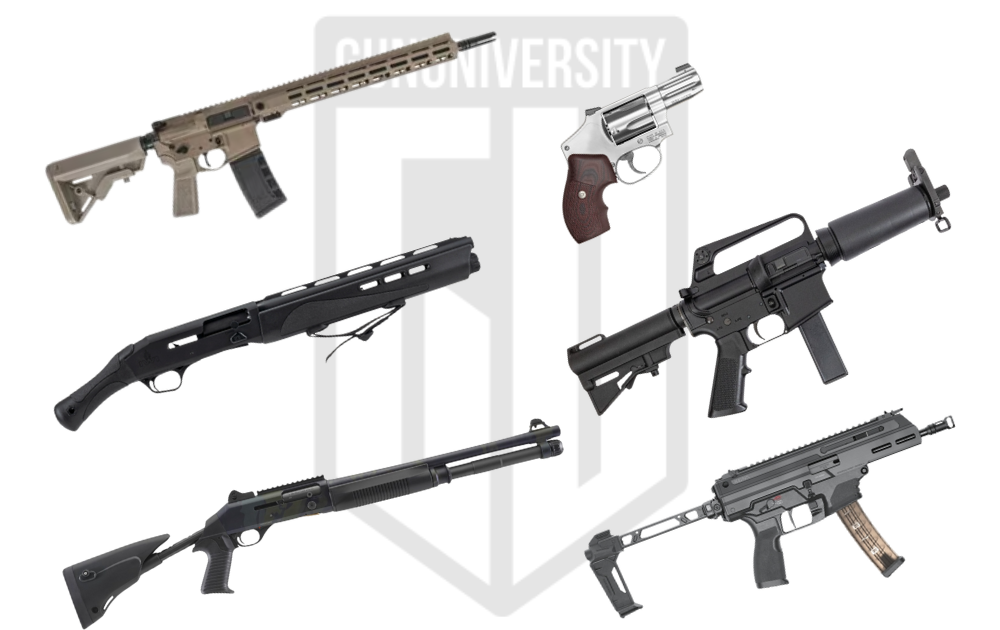
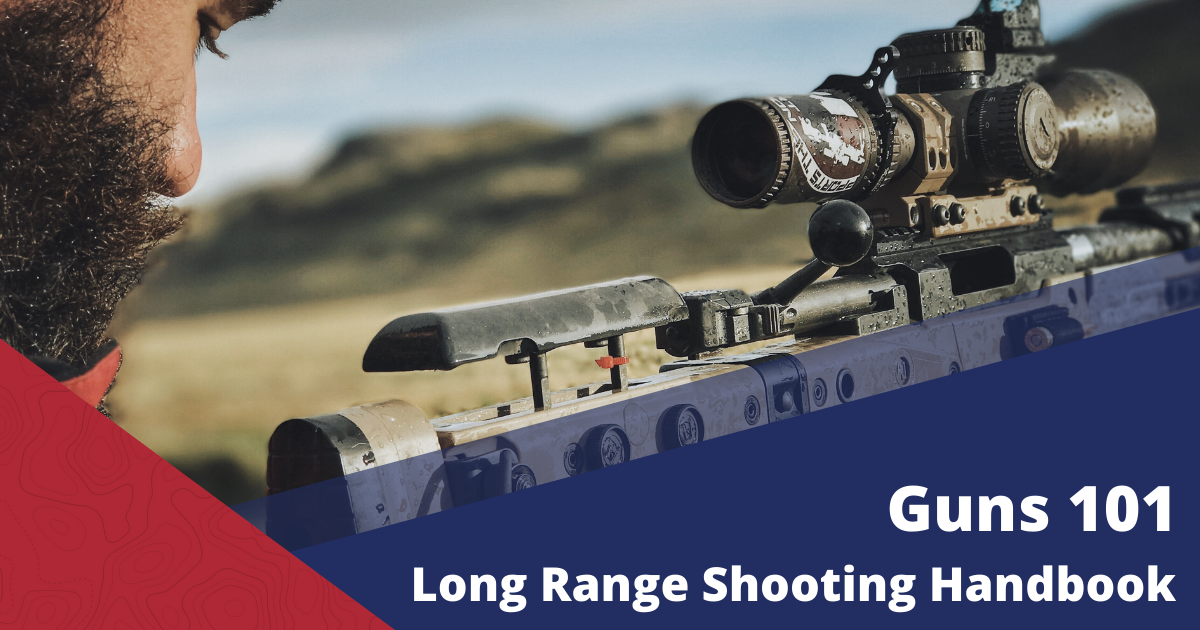
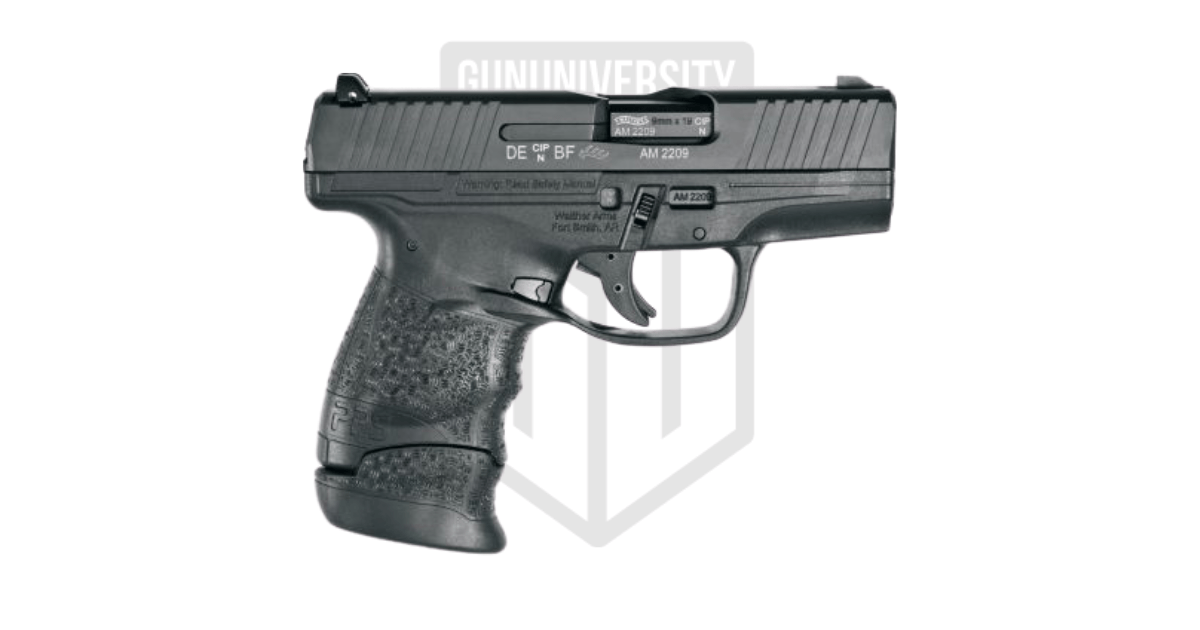
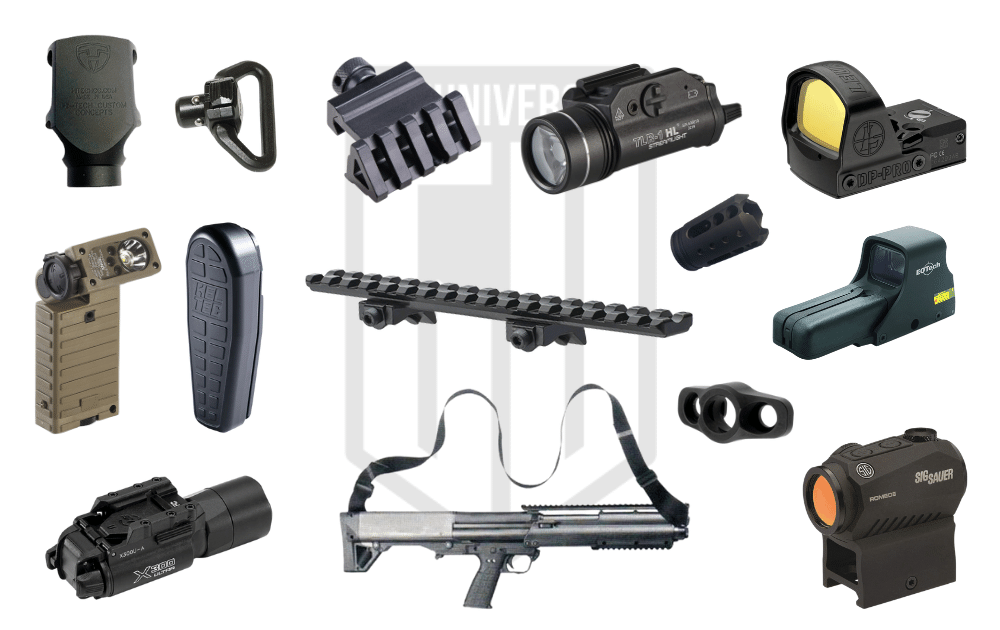
If you’re an avid shooter, protecting your hearing should be a top priority. Finding the best shooting ear protection can make all the difference in preserving your auditory health while enjoying your favorite hobby. From earmuffs to custom-molded earplugs, there’s a wide range of options to suit different preferences and shooting environments. Remember, investing in quality hearing protection not only safeguards your ears but also enhances your shooting experience by allowing you to focus on precision and accuracy. Stay safe, protect your hearing, and keep enjoying your time at the range!
I’ve owned these and its predecessor for many years. I replaced the standard foam ear cups with the upgraded gel ear cups and they are fantastic. I think the new premium model comes standard with the gel ear cups. I can wear these all day in comfort and have done so at several all day training activities. Highly recommended.
DEWALT is my second pair of ear muffs. They’re worn year-round. When the days are longer, there are weekends when I wear these 8 hours a day. They take some abuse. Heat, rain, snow. Get knocked off or fall off my head. Store them on my tractor so that even when not being worn, they get bounced around. After that, it still works well.
How about a follow-up that covers budget comm setups with these muffs? I currently use the Peltor 300’s and I am having a awful time trying to get something that works. I can’t find a good mic that works with the 300s and a beofeng radio. My reason for wanting budget friendly is because I have to buy two sets and will be recommending it to more.
First Ex: 31-7=24
24÷2= 12
140-12=128
Last Ex: 34-7=27
147-27=120. Why not ÷ by 2?
Great pick up Dale – if our paths cross, I owe you a beer. The “divide” by two is actually unnecessary when talking about guns…but is something you might see others use. This is because OSHA actually recommends that work places use the divide by two so as to be more conservative when choosing required hearing protection policy. But this doesn’t pertain to gun noise calculations for two reasons: 1) OSHA’s divide by two is based on the noise being that which is right by the ear. However, the gun’s noise measurement is right next to the end of the barrel…which I hope no one is shooting next to their ear and 2) OSHA’s is based on noise exposure over a long period of time and looks to account for that, where as gun noise is not. I’ve updated the article to reflect that and like I said, I owe you a beer.